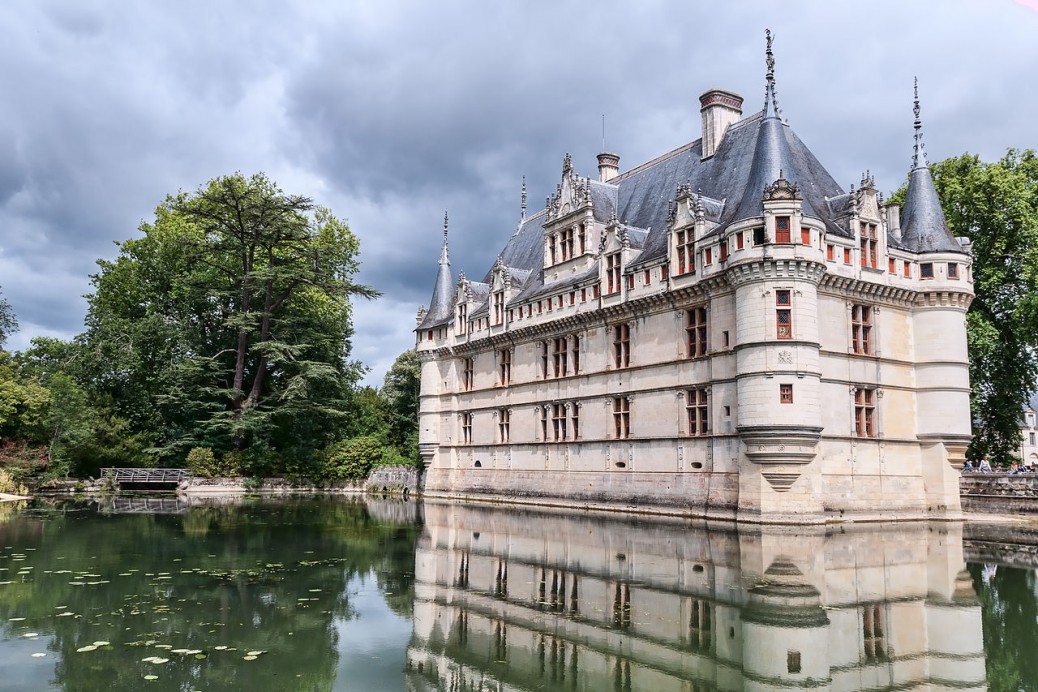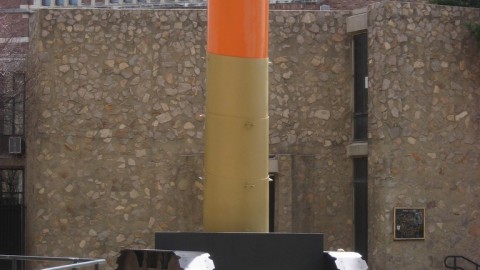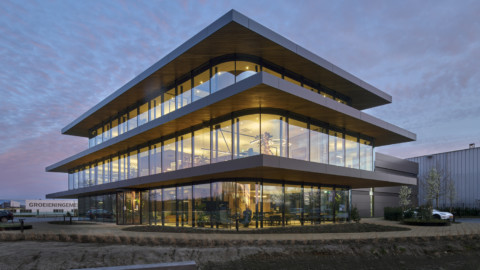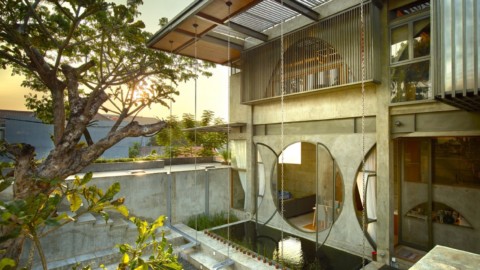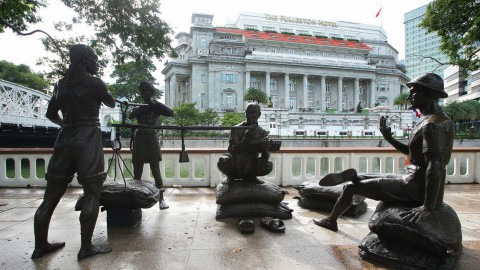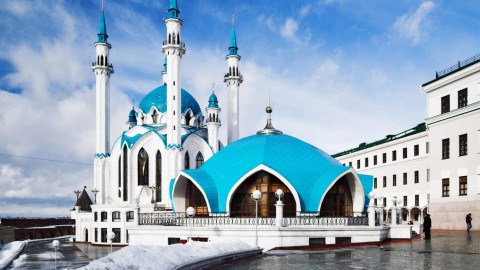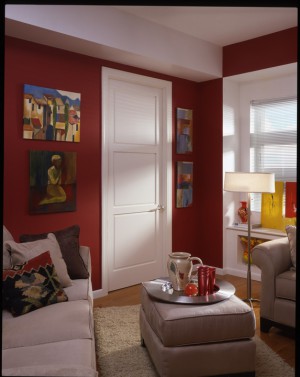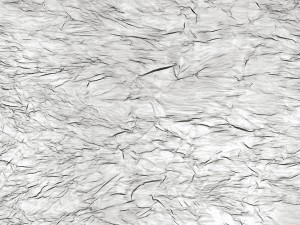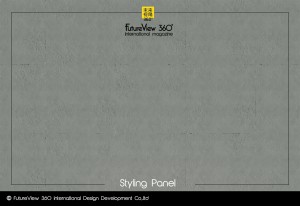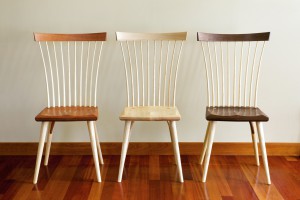Château d’Azay-le-Rideau
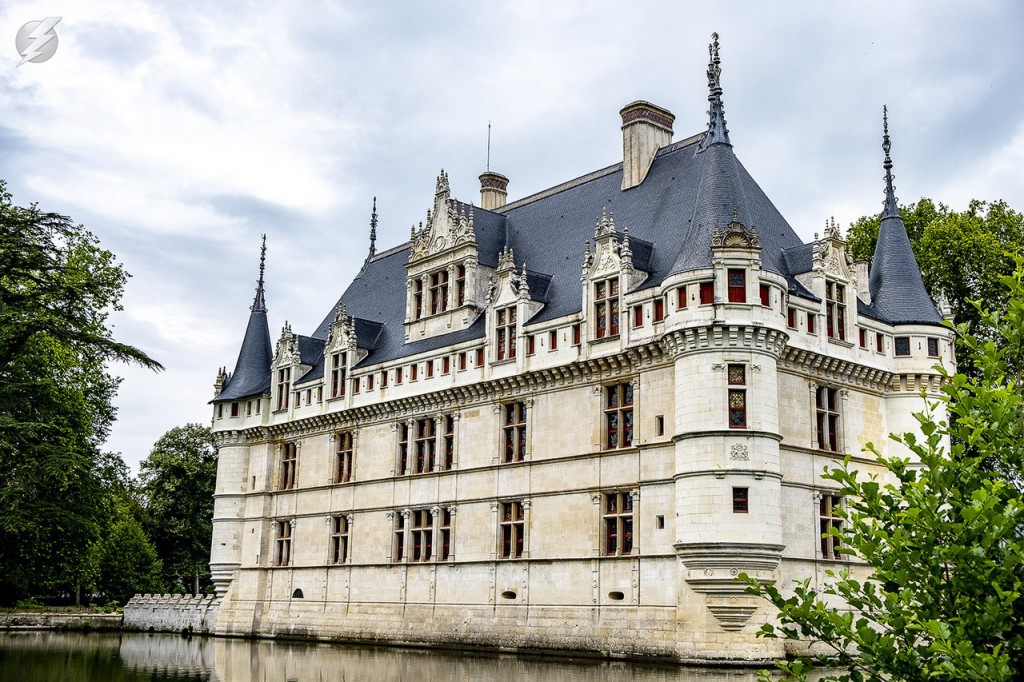
The Château d’Azay-le-Rideau (pronounced [azɛ lə ʁido]) is located in the town of Azay-le-Rideau in the French département of Indre-et-Loire. Built between 1518 and 1527, this château is considered one of the foremost examples of early French renaissance architecture. Set on an island in the middle of the Indre river, this picturesque château has become one of the most popular of the châteaux of the Loire valley.
Châteaud’Azay-le-Rideau(發音為[azɛləʁido])位於Indre-et-Loire法國省的Azay-le-Rideau鎮。 這座城堡建於1518年至1527年間,被認為是法國早期文藝復興時期建築最重要的典範之一。 這座風景如畫的城堡坐落在安德爾河中間的一個小島上,已成為盧瓦爾河谷最受歡迎的城堡之一。
Origins of the Château
The current château of Azay-le-Rideau occupies the site of a former feudal castle. During the 12th century, the local seigneur Ridel (or Rideau) d’Azay, a knight in the service of Philip II Augustus, built a fortress here to protect the Tours to Chinon road where it crossed the river Indre.
However, this original medieval castle fell victim to the rivalry between Burgundian and Armagnac factions during the Hundred Years’ War. In 1418, the future Charles VII passed through Azay-le-Rideau as he fled from Burgundian occupied Paris to the loyal Armagnac stronghold of Bourges. Angered by the insults of the Burgundian troops occupying the town, the dauphin ordered his own army to storm the castle. The 350 soldiers inside were all executed and the castle itself burnt to the ground. For centuries, this fate was commemorated in the town’s name of Azay-le-Brûlé (literally Azay the Burnt), which remained in use until the 18th century.
城堡的起源
現在的Azay-le-Rideau城堡佔據了前封建城堡的遺址。 在12世紀,當地的侍者Ridel(或Rideau)d’Azay,一位為Philip II Augustus服務的騎士,在這裡建造了一座堡壘,以保護Tours到Chinon公路,穿過Indre河。
然而,這個原始的中世紀城堡成為百年戰爭期間勃艮第和阿馬尼亞克派系之間競爭的犧牲品。 1418年,未來的查理七世在從勃艮第佔領的巴黎逃到忠誠的阿馬尼亞克堡壘時,經過Azay-le-Rideau。 由於佔領該鎮的勃艮第軍隊的侮辱,這位海豚命令他自己的軍隊襲擊城堡。 裡面的350名士兵全部被處決,城堡本身也被燒毀了。 幾個世紀以來,這個命運在鎮上的名字Azay-le-Brûlé(字面意思是Azay the Burnt)中被紀念,直到18世紀仍在使用。

Architecture and decoration
Exterior
Set on an island in the middle of the Indre, the château of Azay-le-Rideau seems to rise straight out of the waters of the river, which reflect the castle’s façades so that the château appears to float in its own image. The writer Balzac, who lived nearby and was occasionally a guest at the château, deeply admired the building, describing it as ‘a facetted diamond, set in the Indre’. This striking setting has helped Azay-le-Rideau to become one of the most famous of the Loire’s many châteaux.
This relatively small château is divided into two sections, the main central body and a wing at right angles to it, and displays a blend of architectural styles. The influence of the fashionable Italian renaissance style is clear in its long proportions and ornate sculptural decorations. Alongside these Italiante elements are vestiges of medieval defensive architecture, such as the traces of the covered walkway on the external walls or the machicolations under the roof, which were no longer necessary for defence but were incorporated in the château’s design because of their symbolic prestige. Finally, other architectural features, such as the bastion corners with their pointed conical turrets, the vertically stacked dormer windows separated by a string course, and the high, steeply sloping slate roof, help to give Azay-le-Rideau its unmistakably French appearance.
The château’s most prominent feature is the grand central staircase, the escalier d’honneur. Its design is thought to have been inspired by the staircase of the Château de Châteaudun, which it resembles from the outside, though its internal structure is very different. Azay-le-Rideau’s staircase rises in straight flights rather than in a spiral, as was more usual at this time, and is the oldest surviving staircase of this kind in France.
The staircase has three floors, each with a double bay window forming a mezzanine which looks out over the courtyard. The entryway, which resembles a Roman triumphal arch, is decorated with the initials of Gilles Berthelot and his wife, while the pediments overhanging each window bay are carved with the salamander and ermine of Francis I and his wife, Claude of France, in honour to the monarch of the time. Inside, the ceiling of the staircase is made up of medallions sculpted with the profiles of the kings and queens of France from Louis XI to Henry IV. With its columns and pilasters, and ornate carvings of shells, medallions and other symbols, this impressive staircase provides a clear example of the influence of Italian renaissance style in the château’s design.
建築和裝飾
外觀
Azay-le-Rideau城堡坐落在Indre中間的一個小島上,似乎直接從河水中升起,反映了城堡的外立面,使城堡看起來漂浮在自己的形像中。住在附近,偶爾也是城堡客人的作家巴爾扎克對這座建築深感敬佩,將其描述為“安德爾的一顆刻面鑽石”。這個引人注目的環境幫助Azay-le-Rideau成為盧瓦爾眾多城堡中最著名的城市之一。
這個相對較小的城堡分為兩個部分,主要的中央主體和與其成直角的機翼,展現出各種建築風格。時尚的意大利文藝復興風格的影響很明顯,其長度和華麗的雕塑裝飾。除了這些意大利元素之外,還有中世紀防禦性建築的遺跡,例如外牆上有蓋走道的痕跡或屋頂下的機械化,這些不再是防御所必需的,但由於其像徵性的威望而被納入城堡的設計中。最後,其他建築特色,例如帶有尖錐形砲塔的堡壘角落,由弦線路線隔開的垂直堆疊的天窗,以及高而陡峭的石板屋頂,有助於讓Azay-le-Rideau具有明顯的法國外觀。
城堡最突出的特色是宏偉的中央樓梯,escalier d’honneur。它的設計被設計靈感來自ChâteaudeChâteaudun的樓梯,它與外部相似,儘管它的內部結構非常不同。 Azay-le-Rideau的樓梯在直線飛行而不是螺旋式上升,這在當時更常見,並且是法國現存最古老的樓梯。
樓梯有三層樓,每層都有一個雙凸窗,形成一個俯瞰庭院的夾層樓。入口處類似於羅馬凱旋門,用Gilles Berthelot和他的妻子的首字母裝飾,而懸掛在每個窗口灣的山形牆上刻有弗朗西斯一世和他的妻子法國克勞德的蠑螈和貂,以紀念當時的君主。在裡面,樓梯的天花板是由從路易十一到亨利四世的法國國王和王后的輪廓雕刻而成的獎章。這個令人印象深刻的樓梯有柱子和壁柱,華麗的貝殼,獎章和其他符號雕刻,為意大利文藝復興風格在城堡設計中的影響提供了一個明顯的例子。
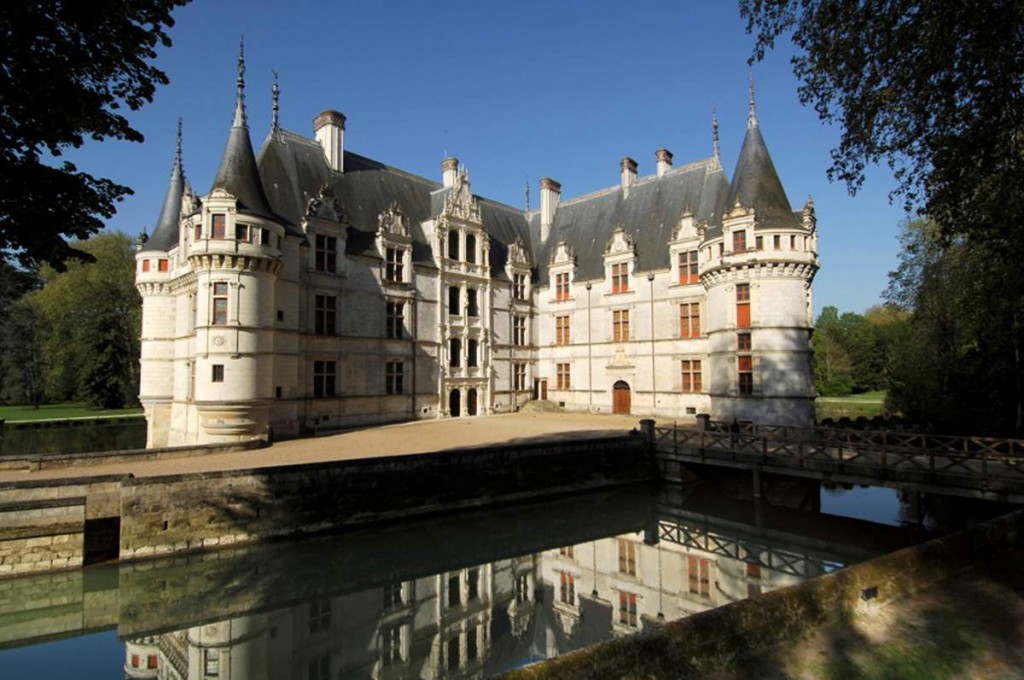


Interior
The château’s richly sculpted interior decoration once again reflects the influence of the Italian renaissance. It is made up of several drawing rooms and stately apartments, most of which are decorated in the neo-renaissance style popular during the 19th century. Many of these rooms display 16th- and 17th-century Flemish tapestries, most notably the ‘Scenes from the Old Testament’ woven in Audenarde, and the ‘Story of Psyche’, which was created in Brussels and which, in 2009, provided the inspiration for the château’s exhibition dedicated to the Greek myth. The château also houses a significant collection of artwork, including a ‘Dame au Bain’ (possibly depicting Diane de Poitiers) by François Clouet, and several portraits of French monarchs, including Francis I, Henry III and Catherine de Medici.
Also of note are the attics, where the charpente (in French), or the hand-crafted wooden frame supporting the roof, has been recently restored (2010–11) and can be viewed alongside an exhibition explaining the complex techniques of its construction.
內部
城堡富麗堂皇的室內裝飾再次體現了意大利文藝復興的影響。它由幾間客廳和莊嚴的公寓組成,大部分都以19世紀流行的新文藝復興風格裝飾。其中許多房間展示了16世紀和17世紀的佛蘭芒掛毯,最著名的是Audenarde編織的“舊約的場景”,以及在布魯塞爾創建的“靈魂的故事”,並於2009年提供了靈感。這座城堡的展覽致力於希臘神話。城堡還收藏了大量藝術品,包括FrançoisClouet的“Dame au Bain”(可能描繪Diane de Poitiers),以及法國君主的幾幅肖像畫,包括Francis I,Henry III和Catherine de Medici。
同樣值得注意的是閣樓,其中charpente(法語)或支撐屋頂的手工木製框架最近已經修復(2010-11),並且可以與展覽一起展示,解釋其複雜的建築技術。


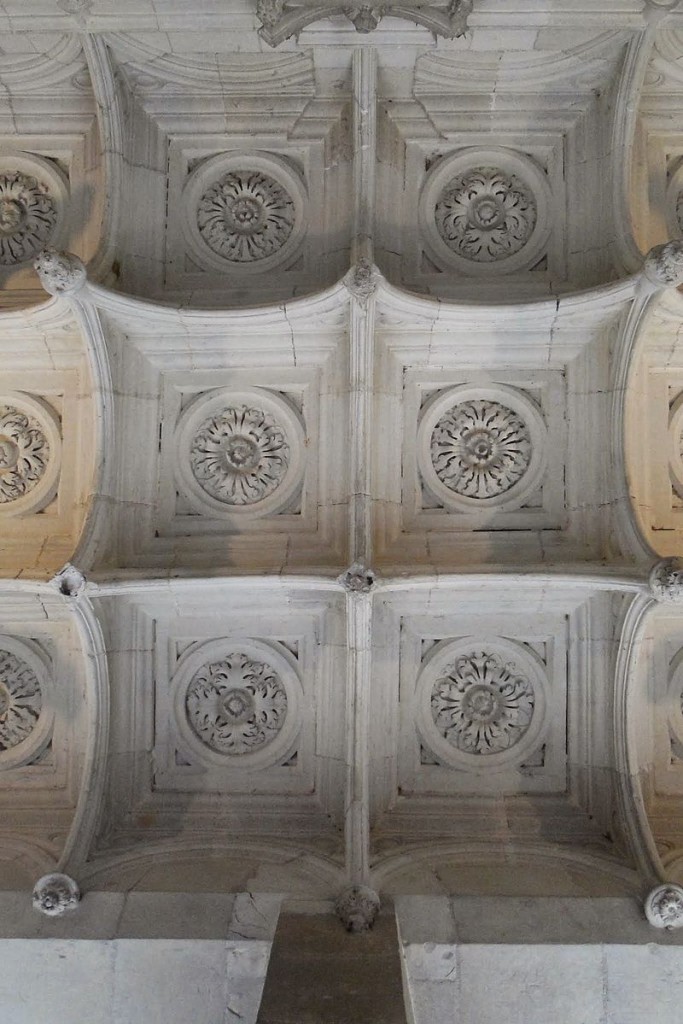


FROM:https://en.wikipedia.org/wiki/Ch%C3%A2teau_d%27Azay-le-Rideau
Don’t you think it’s addictive?
Want to know more about the beauty of architecture?
Come and join our members to explore the beauty of architectural design.
覺得看得不過癮嗎?
想要知道更多建築之美嗎?
快來加入我們的會員,一同探索建築設計之美。
The above article is purely for appreciation and sharing purposes, as well as the construction of new technology and the public can be in-depth understanding of the information at the same time there are sources, will be able to query, no use of the document as a commercial transaction, if illegal, please inform the We will immediately remove the site, thank you for cooperation.
以上文章純粹作為欣賞及分享用途,以及將建築新型技術傳遞給與大眾能夠深入了解,同時資料還有來源,將可查詢,絕無使用該文件資料作為商業交易行為,如有違法請務必告知該網站我們將立即處理撤除,謝謝合作。

